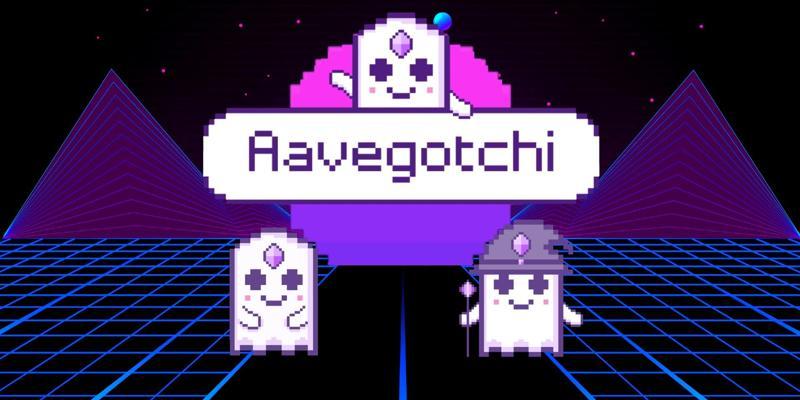Posted on November 2, 2022

Aavegotchi is a game that uses NFTs with dynamic attributes to earn crypto by playing mini-games and upgrading the NFT, and despite its triple-digit entry price is one of the most popular Play-To-Earn (P2E) games in blockchain. Aave (which means ‘ghost’ in Finnish) is a cryptocurrency lending and borrowing app that allows users to obtain crypto loans using their cryptocurrency/stablecoin holdings as collateral.
aTokens are interest-bearing cryptocurrencies issued when a user makes a deposit on Aave, and they can be bought and sold on decentralized exchanges (DEXes) like Uniswap or Quickswap. In short, when a user deposits crypto they receive aTokens, and when they deposit aTokens they receive crypto. Each cryptocurrency accepted by Aave has an aToken associated with it, (i.e. aUSDC, aWETH), and aTokens held in a crypto wallet will slowly accumulate over time.
According to Swissborg Academy, Aavegotchi pets, or ‘Gotchis’, can be bought or sold on Aavegotchi’s marketplace with GHST tokens, or they can be created by purchasing a ‘Portal’ and summoning a new one. Every Gotchi requires a minimum amount of aTokens to exist, which is marked on each Gotchi’s forehead, and each one possesses unique stats/attributes that can be improved over time by playing with (and petting) the Gotchi pet. Aavegotchi is governed by the AavegotchiDAO, a decentralized autonomous organization (DAO) of GHST token holders, and developed by Singapore-based Pixelcraft Studios. GHST is earned by playing mini-games and voting in the DAO, and can be bought or sold on Polygon’s Quickswap DEX.
How Do Attributes Determine Their Usefulness?
Pre-owned Aavegotchi pets may have better stats, equipped items, and a name, while new Aavegotchi pets will begin with randomly generated attributes, no NFT wearables, and no name. Currently, the floor price of a low-end Aavegotchi pet is around 410 GHST, or $471 USD. To summon a new NFT Gotchi pet, a Portal must be purchased. Opened Portals will show 10 potential Gotchis that can be summoned, but only one can be chosen, while closed Portals show nothing but have a small chance of dropping a rare Gotchi when opened (but they probably won’t). At the moment, Portals are selling at a floor price of 515 – 570 GHST ($600 – $655). To summon a Gotchi, the user must first deposit its required amount of aTokens, which is determined by its rarity.
A Gotchi’s attributes determine its rarity, performance in mini-games, and the NFT wearables that can be equipped to it. Most attributes are changed through interaction, leveling up, and by equipping NFT wearables. Random traits are assigned by the Chainlink oracle’s VRF random number generator, and are represented on a graphical bell curve to show their rarity. The more extreme to one side or another a trait is, the more useful it will be for some mini-games while being detrimental to others, and the only ‘bad’ traits are average ones. Gotchis earn experience (XP) for voting and playing mini-games, and with enough XP the pet can ‘level up’. Every few levels, a Gotchi pet will receive a Spirit Point to increase/decrease a trait of the user’s choice. The more levels a Gotchi pet has, and the better refined its traits are, the more valuable it will be to its owner (and other players).
While a $450+ price tag is a very steep ask to play 2D pixelated mini-games, dedicated players who learn how to work the Aavegotchi system can actually make money earning crypto rewards, or they can train and flip Gotchi pets to other players. Aavegotchi is currently one of the most advanced P2E games in blockchain, and is a good example of how NFTs and cryptocurrencies could be used to create games that blur the line between gaming and decentralized finance (DeFi), otherwise known as ‘GameFi.’ While there’s little chance of Aavegotchi extending beyond its crypto-native niche due to the high entry price, curious players can still rent a Gotchi NFT pet to play mini-games and earn crypto rewards.
